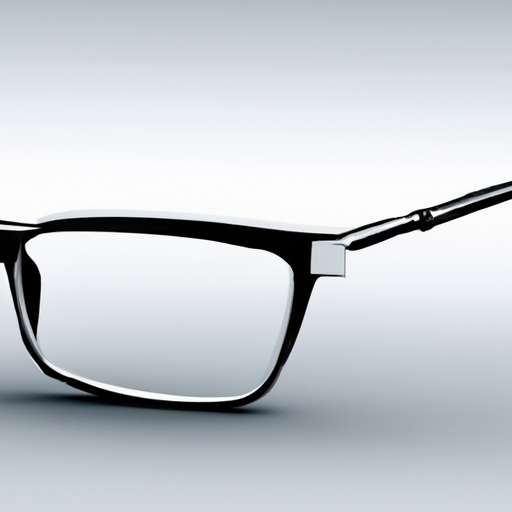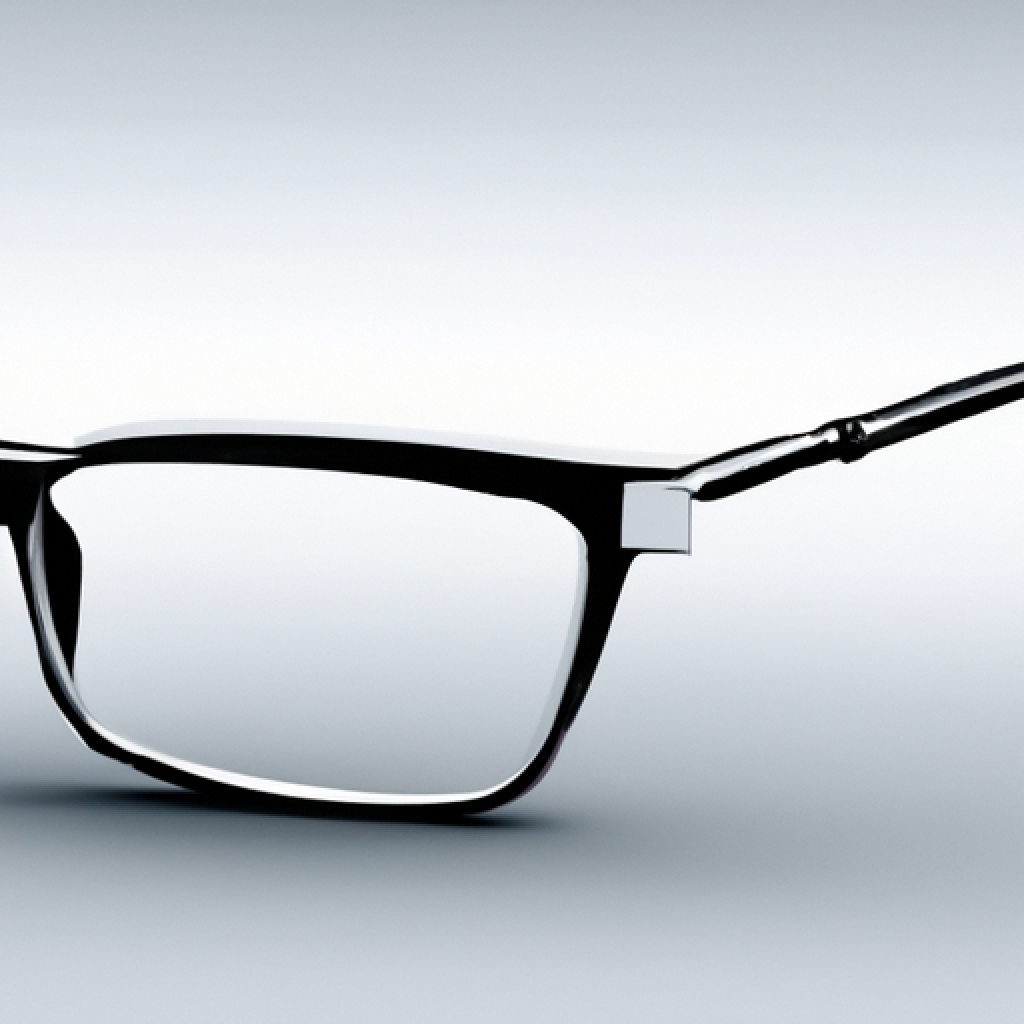Is AR Coating On Glasses Worth It?

So, here’s the scoop: we’ve all been there, squinting and straining our eyes, desperately trying to read a message on our phones or decipher that menu at a dimly lit restaurant. It’s frustrating, to say the least. But wait! There might just be a solution to our vision woes – AR coating on glasses. But is it really worth it? That’s the burning question we’re here to answer.
Understanding AR Coating
Definition of AR coating
AR coating, also known as Anti-Reflective coating or Anti-Glare coating, is a thin layer of material that is applied to the surface of eyeglass lenses. This coating is designed to reduce reflection and glare by allowing more light to pass through the lenses, ultimately improving vision clarity.
How AR coating works on glasses
AR coating works by minimizing the amount of light that bounces off the surface of the eyeglass lenses. When light hits an uncoated lens, a significant portion of it reflects back, causing glare and reducing visibility. However, with AR coating, this reflection is greatly reduced, allowing more light to pass through the lenses and reach the eyes. This results in improved vision quality and reduced eye strain, especially in bright or low-light conditions.
Types of AR coating
There are various types of AR coatings available in the market today, each with its own unique features and benefits. Some common types include:
-
Single-layer AR coating: This is the basic type of AR coating that consists of a single layer of anti-reflective material applied to the lenses. While it provides decent glare reduction and improved vision clarity, it may not be as durable or effective as the more advanced types.
-
Multi-layer AR coating: This type of AR coating involves multiple layers of anti-reflective material applied to the lenses. It offers superior performance in terms of glare reduction, reflection elimination, and scratch resistance. Multi-layer AR coatings are often more expensive but deliver exceptional results.
-
Hydrophobic AR coating: This type of AR coating includes an additional hydrophobic layer that repels water and prevents smudging and staining on the lenses. It is particularly useful for those living in humid environments or individuals who frequently touch their glasses.
-
Oleophobic AR coating: Similar to hydrophobic coating, oleophobic AR coating includes an extra layer that repels oil, fingerprints, and smudges. This type of coating is beneficial for those who have oily skin or work in environments where glasses are exposed to oils or greases.
Choosing the right type of AR coating depends on individual preferences, lifestyle, and budget. It is advisable to consult with an eyecare professional to determine the most suitable option.
The Advantages of AR Coating
Improvement in Vision Quality
One of the major advantages of AR coating is the significant improvement it offers in vision quality. By reducing reflections and glare, AR-coated glasses enhance contrast, clarity, and detail, making it easier to see objects and read text. This is particularly beneficial when driving at night, while using digital devices, or working in environments with bright lighting conditions.
Reduced Eye Strain
AR-coated glasses can greatly reduce eye strain, especially for individuals who spend long hours in front of screens or engage in activities that require intense focusing. The reduction in reflections helps to minimize the amount of light that enters the eyes, alleviating discomfort and fatigue. This can be particularly helpful for individuals with sensitive eyes or those prone to frequent headaches related to eye strain.
Cosmetic Appeal
Another advantage of AR coating is its cosmetic appeal. Without the glare and reflection caused by uncoated lenses, AR-coated glasses appear more natural and allow others to see the wearer’s eyes clearly. This is particularly beneficial for individuals who wear glasses regularly and want to maintain a more natural and aesthetic appearance.

Problems Associated with AR Coating
Potential Glare Issues
While AR coating is designed to reduce glare, it can sometimes create its own challenges. In certain lighting conditions, such as when facing bright lights or looking at a light source directly, AR-coated glasses may produce a slight halo or residual glare effect. While this is typically minimal and only noticeable in specific situations, it is something to consider when choosing AR-coated glasses.
Smudging and Staining
AR coating can be prone to smudging and staining, especially if not properly maintained. The hydrophobic or oleophobic layers of certain AR coatings help repel water, oil, and fingerprints to some extent, but regular cleaning is still required to keep the lenses clear and smudge-free. Failure to clean and care for AR-coated glasses adequately may result in decreased visual acuity and compromised aesthetic appeal.
Scratch Vulnerability
AR-coated lenses, especially those with single-layer coatings, can be more susceptible to scratches compared to uncoated lenses. While multi-layer AR coatings offer better scratch resistance, they are not completely scratch-proof. Proper handling and storage of AR-coated glasses, such as using a protective case and avoiding rough surfaces, can help minimize the risk of scratches.
Cost Implication of AR Coating
The Basic Cost of AR Coating
The cost of AR coating can vary depending on several factors, such as the type of AR coating chosen, the lens material, and the brand. On average, the cost of adding AR coating to eyeglass lenses ranges from $30 to $150. This cost is in addition to the cost of the lenses themselves.
Factors Affecting the Pricing of AR-coated Glasses
Several factors can affect the pricing of AR-coated glasses. The brand and reputation of the eyewear manufacturer or retailer, the complexity of the prescription, the lens material (such as plastic or high-index), and any additional coatings or treatments applied to the lenses can all contribute to the overall pricing. Higher-end AR coatings, such as multi-layer or hydrophobic options, tend to be more expensive than basic single-layer coatings.
Cost-Benefit Analysis
When considering the cost of AR coating, it’s essential to evaluate the potential benefits. Improved vision quality, reduced eye strain, and the enhanced cosmetic appeal of AR-coated glasses can greatly outweigh the additional expense for many individuals. However, personal budget constraints and individual needs should also be taken into account. It is advisable to discuss the cost implications and potential benefits with an eyecare professional to make an informed decision.

The Durability of AR Coated Glasses
Life span of AR coatings
The life span of AR coatings can vary depending on factors such as the quality of the coating, the manufacturing process, and how well the glasses are maintained. On average, a well-maintained AR coating can last between one to three years. However, it is important to note that the effectiveness of the coating may gradually diminish over time.
Conditions that Trigger Faster Wear and Tear
Certain conditions can accelerate the wear and tear of AR coatings. Regular exposure to harsh chemicals, excessive rubbing during cleaning, and storing glasses in environments with extreme temperatures or high humidity can compromise the coating’s durability. Additionally, using abrasive materials or rough cloth to clean AR-coated lenses can cause micro-scratches that gradually degrade the performance of the coating.
Maintenance Tips for Prolonged Durability
To maximize the durability of AR-coated glasses, it is crucial to follow proper cleaning and maintenance practices. Use a gentle lens cleaner specifically designed for AR-coated lenses, along with a microfiber cleaning cloth. Avoid using paper towels or rough materials that can scratch the lenses. Store glasses in a protective case when not in use to minimize exposure to potential damage. Regularly inspect the lenses for any signs of wear or coating deterioration and seek professional assistance if necessary.
The Impact of AR Coating on Eye Health
Benefits to Eye Health
AR coating can have positive effects on eye health by reducing glare and reflections that strain the eyes. By allowing more light to pass through the lenses, AR-coated glasses can enhance visibility, especially in low-light conditions. This can be particularly beneficial for individuals with certain eye conditions, such as cataracts or macular degeneration, as it improves their ability to see and perform daily tasks.
Possible Negative Impacts
While the advantages of AR coating generally outweigh any negative impacts, some individuals may experience certain side effects. In rare cases, AR coatings can cause reflections or distortions that may affect visual perception. Individuals with highly sensitive eyes or specific visual conditions may be more prone to these issues. In such cases, it is recommended to consult with an eyecare professional to test the compatibility of AR-coated glasses with individual visual needs.
Comments from Eye Health Professionals
Eye health professionals have varying opinions on the use of AR coatings, depending on individual patient characteristics. Some professionals consider AR coating as a valuable addition to eyeglasses, especially for individuals with complaints of glare or light sensitivity. They believe that the benefits in improved vision quality and reduced eye strain outweigh the potential drawbacks. However, others may have reservations based on personal experiences or specific patient requirements. It is important to discuss any concerns or queries with a trusted eyecare professional to determine the best course of action.

AR Coating and Outdoor Use
Benefits for Outdoor Use
AR-coated glasses can provide several benefits for outdoor activities. The reduction in glare and reflections allows for improved vision clarity, making it easier to see objects and navigate in bright sunlight. This is particularly advantageous for individuals who spend a significant amount of time outdoors, such as hikers, cyclists, or those participating in water sports. AR coating can enhance visual comfort and safety in various outdoor environments.
Challenges for Outdoor Use
While AR coating offers advantages for outdoor use, certain challenges may arise in specific situations. Some individuals may experience residual glare or halos around bright lights, such as car headlights or street lamps, especially in low-light conditions. Additionally, the hydrophobic or oleophobic properties of certain AR coatings may not perform as effectively when exposed to excessive moisture, such as rain or sweat. It is important to consider these factors when choosing AR-coated glasses for outdoor activities.
AR Coating Versus Polarized Sunglasses
When it comes to outdoor use, the choice between AR coating and polarized sunglasses depends on individual preferences and specific needs. AR coating primarily reduces reflections and glare, providing improved overall vision clarity. On the other hand, polarized sunglasses are specifically designed to block horizontally-oriented light, such as reflections on water or shiny surfaces, resulting in enhanced visual comfort and reduced glare. In certain situations, combining AR coating with polarized sunglasses may provide optimal benefits, especially for individuals with higher visual demands.
AR Coating and Screen Use
Benefits for Computer Use
AR-coated glasses can offer significant benefits for individuals who spend extended periods in front of computer screens or other digital devices. The reduction in reflections and glare helps minimize eye strain and fatigue, allowing for a more comfortable and productive work or study environment. AR coating can enhance visual clarity and minimize distractions caused by screen glare, resulting in improved focus and concentration.
Challenges for Screen Use
While AR coating is beneficial for screen use, it may have limitations in some situations. In certain lighting conditions or when viewing dark-colored screens, some individuals may experience a slight decrease in contrast or a “hazy” effect. Additionally, the use of AR-coated glasses may not provide the same level of blue-light protection as dedicated blue-light blocking lenses or coatings. Individuals who specifically require significant blue-light protection may need to consider alternatives to AR coating.
AR Coating Versus Blue-Light Blockers
The choice between AR coating and blue-light blockers depends on the individual’s requirements and preferences for screen use. AR coating primarily focuses on reducing reflections and glare, resulting in improved overall vision clarity and reduced eye strain. Blue-light blockers, on the other hand, are designed to specifically filter out the harmful blue light emitted by digital screens, reducing potential eye fatigue and sleep disturbances caused by exposure to blue light. Some AR coatings may have minimal blue-light blocking properties, but they may not provide the same level of protection as dedicated blue-light blockers.

Cleaning and Caring for AR Coated Glasses
Special Cleaning Requirements
To properly clean AR-coated glasses, it is important to follow specific guidelines to avoid damaging the coating. Use a gentle lens cleaner specifically formulated for AR-coated lenses, as harsh or abrasive cleaners can strip away the coating. Apply the cleaner to a microfiber cleaning cloth and gently wipe the lenses in a circular motion. Avoid using paper towels, tissues, or rough materials that can scratch the lenses. Proper cleaning practices help maintain the clarity and performance of the AR coating.
Protecting AR Coated Glasses
To protect AR-coated glasses from potential damage, it is advisable to store them in a protective case when not in use. Avoid placing glasses face-down or exposing them to rough surfaces that can scratch the lenses. Additionally, it is important to avoid exposing glasses to extreme temperatures or high humidity, as this can affect the durability of the AR coating. Regularly inspect the lenses for any signs of wear or damage and seek professional assistance if necessary.
Repairing Damaged AR Coating
If the AR coating on glasses becomes damaged or scratched, it is typically not possible to repair it at home. Attempting to fix the coating yourself may further compromise the lens surface. In such cases, it is best to consult with an eyecare professional or the manufacturer to explore potential repair or replacement options. Proper care and maintenance can help prevent significant damage to the AR coating and prolong the lifespan of AR-coated glasses.
Did the Failure of Google Glass Impact the Adoption of AR Coating on Glasses?
The failure of Google Glass, commonly known as why google glass failed, did not significantly impact the adoption of AR coating on glasses. While Google Glass faced issues related to its high price, privacy concerns, and limited functionality, the failure of this specific product did not undermine the potential of AR coating on glasses. AR coating offers benefits like reduced glare and improved visual clarity, driving its adoption in various industries and consumer eyewear.
Making the Decision: Is AR Coating Worth It?
Personal Factors to Consider
When deciding whether AR coating is worth it, several personal factors should be taken into consideration. These factors include individual lifestyle, visual demands, preferences, and budget constraints. If an individual spends a significant amount of time in front of screens, experiences discomfort from glare or reflections, or desires a more aesthetically pleasing appearance, AR coating can provide significant benefits. However, for individuals with specific eye conditions or those who require advanced blue-light protection, alternative options may be more suitable.
Professional Opinions
Eyecare professionals can provide valuable insights and recommendations regarding the suitability of AR coating based on individual visual needs. Optometrists or ophthalmologists can evaluate the potential benefits and drawbacks of AR-coated glasses, taking into account an individual’s prescription, lifestyle, and eye health. Seeking professional advice can help in making an informed decision and understanding the potential impact of AR coating on overall eye health and visual comfort.
Consumer Reviews and Experiences
Consumer reviews and experiences can provide additional perspectives on the effectiveness and benefits of AR-coated glasses. Reading reviews from individuals who have used AR-coated glasses can offer insights into the real-life experiences with the coating’s performance, durability, and overall satisfaction. It is important to consider a variety of reviews to gain a comprehensive understanding of the general consensus and identify any potential concerns or limitations.
In conclusion, AR coating can greatly enhance the visual experience and comfort of wearing glasses. With its ability to reduce reflections, improve vision clarity, and minimize eye strain, AR-coated glasses offer significant advantages for various activities and environments. However, it is important to consider the potential challenges and limitations associated with AR coating, such as residual glare, smudging, and scratch vulnerability. Personal factors, professional opinions, and consumer reviews can all contribute to making an informed decision on whether AR coating is worth it for an individual’s specific needs and preferences.








